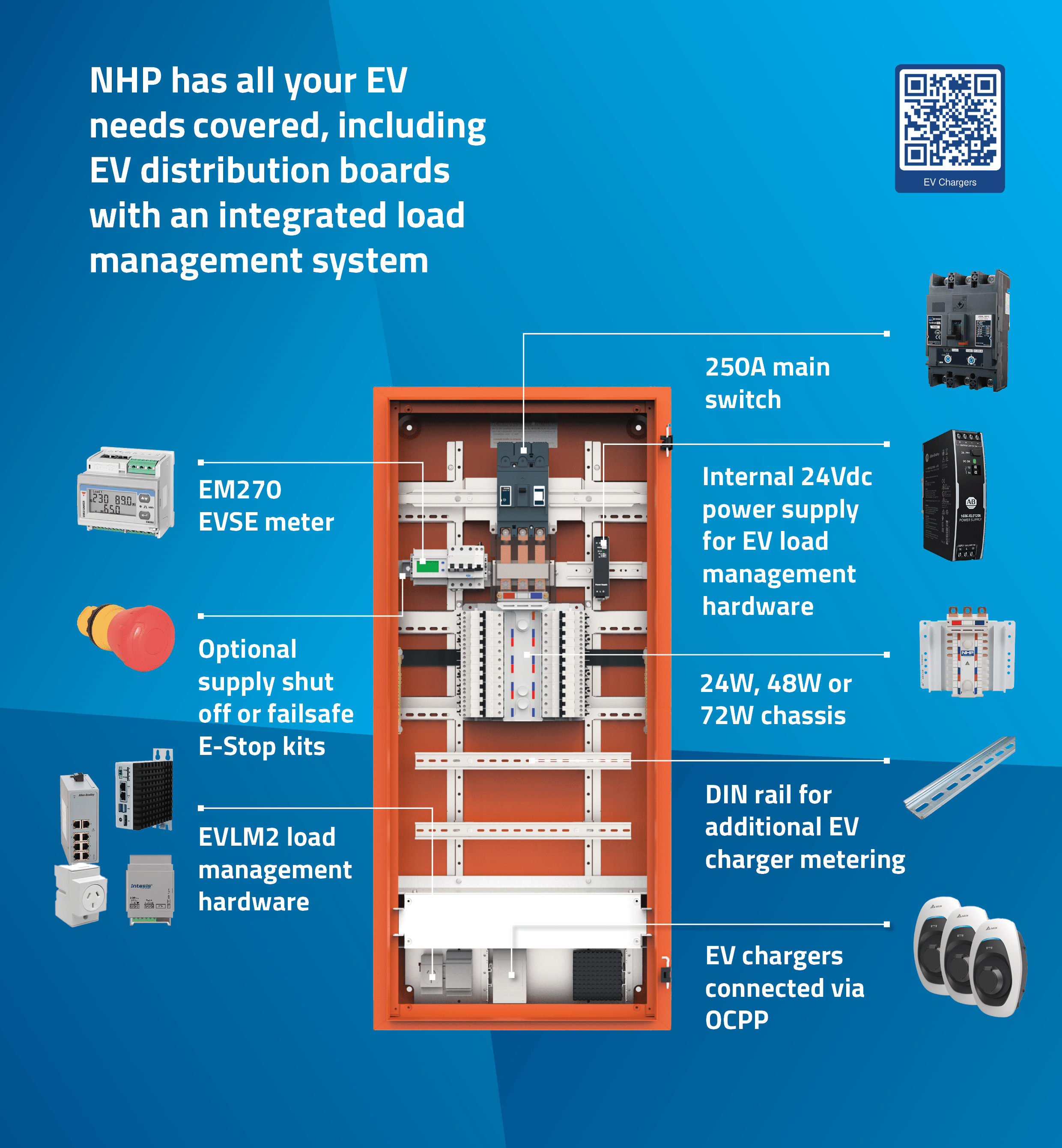As we move towards a greener and more sustainable future, the adoption of electric vehicles (EVs) is rapidly gaining momentum. In fact, more EVs were sold in the first half of 2023 than in all of 2022, so it’s important that EV charging infrastructure is robust enough to keep up with the increasing demand.
To this end, the introduction of the National Construction Code (NCC) 2022 means that a dedicated electric vehicle distribution board (EV DB) is required for new buildings and a certain percentage of parking spaces in new developments and significant renovations be equipped with EV charging points.
Dedicated electric vehicle distribution boards (EV DBs) and EV load management systems - what you need to know
A dedicated EV DB is designed to handle the unique electrical demands of multiple EV chargers simultaneously. It ensures a seamless and optimised charging experience for EV users while preventing overloads and electrical hazards.
As the number of EVs on our roads increases, load management becomes a critical aspect of EV charging infrastructure. Load management refers to the strategic control of the electricity demand to prevent grid overloads and power supply issues. It ensures that EVs can be charged efficiently without putting undue stress on the electrical grid.
New buildings and renovations should employ load management strategies such as smart charging and demand-response technologies to stagger the charging times of multiple EVs. By doing so, you can avoid peak demand spikes, maximise the utilisation of renewable energy sources and minimise electricity costs for EV owners.
Modes of EV charging - understanding the options
There are several modes of EV charging, each offering unique benefits and use cases.
• Level 1 charging - this is the most basic form of charging, utilising a standard household power outlet. It is slow and best suited for overnight charging at home;
• Level 2 charging - requires a 240-volt outlet and offers faster charging times compared to Level 1. They are commonly used in residential, commercial and public charging stations;
• Level 3 charging (DC fast charging) - DC fast charging is ideal for public charging stations along highways and busy routes. It can charge an EV to 80% capacity in a relatively short time.
As the demand for EV charging infrastructure soars in Australia, electrical contractors and key decision makers in industries such as government, utilities and construction are in a pivotal position to drive change. To help you take advantage of this transformative opportunity, NHP has partnered with Delta - one of the world’s largest EV charger manufacturers – to bring a range of high-quality EV charging products to the local market which are suitable for most applications in most industries, as well as councils and commercial and residential buildings.
NHP offers a range of Delta EV chargers from the basic 7kW AC option to the 350kW ultra-fast charging option. Our team of dedicated engineers have also developed in-house solutions to meet local changing EV infrastructure needs, including NCC compliant EV DBs, the NHP Load Management System and EV readiness site assessment services.
For more information on NHP’s EV solutions, go to nhp.com.au/EV, email us or speak to NHP’s EV specialists:
Australia 1300 647 647 nhpsales@nhp.com.au
New Zealand 0800 647 647 sales@nhp-nz.com
